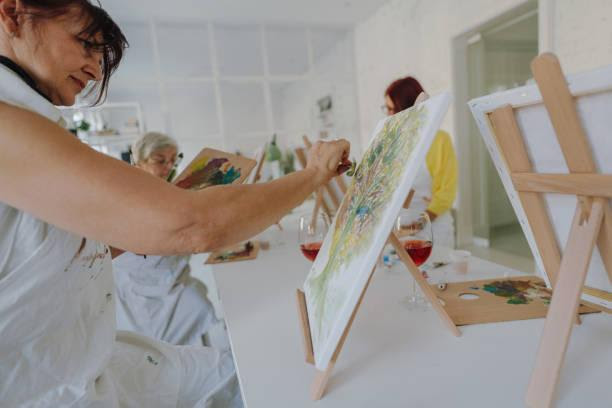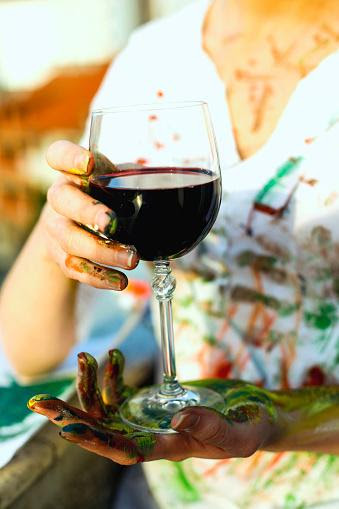Have you done this before? If that’s the case, please come in. It will be pretty exciting at a minimum. There are no guarantees, but you may encounter something amazing after your first paint and sip Gold Coast session… unleash your imagination and wondrous things can happen!
It may be disconcerting to have to learn something entirely new. For beginning painters, it may seem intimidating to express themselves artistically. And what’s better, you’re not on your own. To get the best painting results, we’ve included an artist who will provide a step-by-step tutorial and assist you through the paint and sip Gold Coast process. You will also be joined by a room full of fellow painters, all in the same situation. There’s also a bottle of wine to be brought. You can know more about paint and sip Gold coast by visiting https://www.pinotandpicasso.com.au/goldcoast/
In order to help you get the most out of your first visit, we’ve put up a list of our favorite practical painting tips to take note of before you arrive. Although they are small details, they may have a great impact on your paint and sip Gold Coast session.

Your palette needs to be cleaned of empty space.
This one will benefit you later on! It’s difficult to resist the temptation to have every paint colour available to you, but it’s more advantageous to maintain some area empty. The ability to work in an open area gives us the opportunity to combine colours and mingle them during the session, so that if we’re inspired to try a new colour, we can simply do so. It also saves time and money from painting materials that are wasted.
You may go to the paint and sip Gold Coast station as many times as you like, and whatever colour you need is accessible to you during the session. Your artist will notify you which paints you’ll need at the start of the session. First, pat a small amount of each colour on your working surface, because otherwise the colours will mingle and get discoloured.
Apply little amounts of paint gradually.
The next recommendation is a continuation of the one before. To give space for variation, it’s wise to mix small batches of paint. In other cases, like filling in a backdrop or combining pieces, you may want to combine more. Your artist will help you find your way here. Typically, it’s preferable to begin with a little paint and add more if needed.
Let your paint dry before you go on to the next stage.
An advantage of acrylic paint is that it dries faster when applied in a thin coat. Once it’s dry, if you want to make any more alterations to your painting, you may easily do so by painting over it. Adding a highlight or using brighter colours in a dry surface also enhances the contrast of those colours.
When we work with the paint while it is wet, we employ certain strategies, including mixing colours together. However, you should let the base coat dry before applying the next layer when painting on top of another element (for example, painting a starfish on a rock).
Give your paint some water.
We’re all about water! We remain hydrated with it in between drinks, and it may also be used as a paint thinner, providing varied texture effects. Acrylic paint is rather thick on its own, but when water is added it becomes thinner and runnier, making it more suitable for painting on a canvas. If your paint is hard to spread, try mixing in a few drops of water. If you’re painting anything and wanting to create a sharp edge, then you should incorporate water into your paint to assist overcome the fuzzy edges. For a textured effect, add water to your paint little by bit until you get the consistency you are aiming for.
And, yes, we also use water to clean our brushes. Apply a light stomp on the bottom of the jar to ensure that all the paint is removed from the bristles. Make sure your artist cloth is dry of any excess moisture, and you’re ready to start your paint and sip Gold Coast session.
Put your canvas aside for a moment.
Did you know that one small step is important? By physically moving your canvas a couple of feet away from you and examining it from a different angle, you may have a new perspective on the entire work. Being close to our paintings and then viewing them from a distance is both comfortable and invigorating. You’ll have a greater understanding of how the composition is working, and whether any sections require additional contrast, when you evaluate it as a whole. It’s also enjoyable to circle the room for a few minutes and see what your other artists are up to! You’ll be able to think more clearly when you return to your own residence.

Be in it for the long haul.
Paint and sip Gold Coast events are all about relaxing and meeting people on a creative level. The fact that you let go of whatever expectations you may have about the project or your performance in the process can only make the job more enjoyable. This, in turn, can only have a good effect on the completed result. The artist should direct you. If you have any questions, don’t be shy about asking them, because someone else may have the same ones. There will be a few minor creative snags along the road, but you should remember that this is quite normal and really happens throughout the process. Show some empathy towards yourself and give yourself credit for having attempted something new.
Conclusions and Cleanup
At the conclusion of the paint and sip Gold Coast event, the majority of paintings will still be rather wet. Allow them to dry overnight for later pickup if feasible; but, if this is not possible, here are a few techniques for same-day take-home. Acrylic paint dries quickly in optimum conditions, so prepare by preparing favorable drying conditions: a fan, blow dryer, and a warm, dry room will promote the quickest drying. Leaving paintings in front of a heating vent on a (covered from wet paint!) surface, for example, should result in dry-to-the-touch paintings in around 20 minutes (depending on how thickly the wet paint has been applied).
